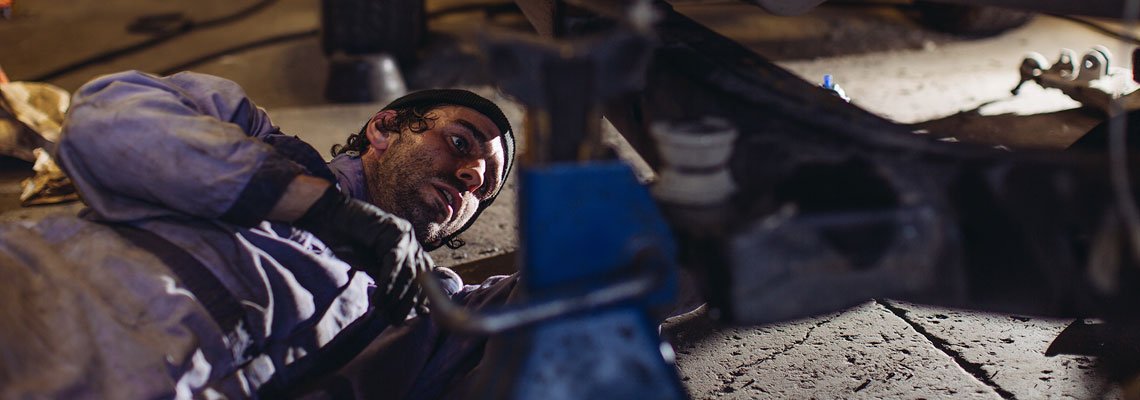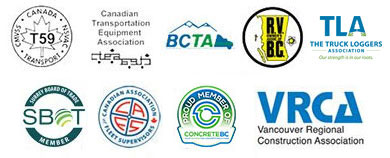Your vehicle’s suspension includes complex parts intended to be “team players.” If you want to guarantee safety and top performance, you need to maintain and repair your suspension parts; springs, shock absorbers, ball joints, and other parts of your vehicles suspension.
Contact us now for your truck or vehicle’s suspension repair & maintenance.
Signs and Symptoms of Suspension Trouble
» Vehicle forces you to slow down more than usual for cornering
» New tires wear out quickly with no obvious cause
» You find moisture on or near your shock absorbers
» Your steering is difficult when traversing bumps
» Your vehicle dips forward when you brake
Your Suspension System: Taken For Granted?
Your suspension tends to be out of sight and out of mind: until there’s a problem.
Maybe your truck’s handling has declined since you’ve been hauling those heavy loads lately. Maybe your luxury car no longer offers such a pleasant, smooth side. Maybe your suspension is so far gone that your vehicle has become an amusement park ride for thrill seekers. Even if your suspension isn’t dead yet – maybe you’re just looking for a suspension upgrade.
Whatever the case, when your comfort, safety, and handling are compromised, your suspension is neither out of sight nor out of mind.
The most important function of your suspension? To keep all of your tires on the road, ideally with tread as flat as possible to the surface of the road. Thus, your braking, steering and driving systems will perform to the best of their capability.
Suspension System: The Major Components
Control Arms
Often called A arms, A frames, I arms, or links, control arms connect each wheel to the frame of your vehicle. Your vehicle has two control arms per wheel to give you better control and stability for those rough surfaces and sharp turns.
Stabilizer Bars
Enjoy your vehicle’s road-hugging performance on sharp curves and hairpin turns? Be grateful for stabilizer bars.
As the name suggests, stabilizer bars give you control, keep you where you want to be, and prevent your vehicle from swaying and lurching. You get high-speed stability, too, when you live out your race car driver fantasies. Front stabilizer bars are common on most vehicles. Rear stabilizer bars can be found on others.
For efficiency, stability control systems are now being offered in more modern vehicle makes and models.
Springs
Springs are at the heart of your suspension system. Their function: To absorb vertical energy. When you drive over a bumpy or potholed surface, you throw off your vehicle’s up-and-down balance. Hit a bump, and up you go; sink into a pothole, and down you go.
Types of Springs
Leaf springs:
Found on rear-wheel drive vehicles, heavy-duty trucks, vans, and SUVs, these flexible structures consist of metal “leaves” piled atop each other and, like a tree, bend but don’t break. The flexible properties in leaf springs make them ideal stabilizers for vehicles that pull heavy loads, like tow trucks.
Coil springs:
Typically found on all four wheels of most vehicles and on the front suspensions of some trucks, coil springs absorb up-down energy. Resembling old bed springs from earlier times, coil springs offer support against bumps and vibrations. Front coil springs are located on either the upper or lower control arms and are cushioned on ball joints. Rear coil springs are located between control arms that feature rubber bushings.
Torsion bars:
Generally used on front-end suspensions on all types of automobiles, these steel bars use twisting properties to absorb up-down energy from your wheels. One end of the torsion bar is attached to the frame of your vehicle, while the other end connects to a wishbone-like structure. Bumps are transferred to the wishbone and then to the torsion bar, which twists to minimize movement.
Air springs:
Positioned between the wheel and the body of your vehicle, air springs absorb wheel vibration. Rubber air springs are filled with the right amount of compressed air to control your ride and maintain proper height of your vehicle.
Shocks and Struts:
You don’t want to be without the dampening effects of these brilliant inventions! When your vehicle hits a bump, your shock absorbers and struts shield the passenger compartments. Located near each wheel, shocks and struts dampen vertical movement.
Types Of Suspensions
Dependent Suspensions:
With a dependent suspension, the wheels on the left and right side of your vehicle are connected and thus work together. A dependent suspension uses a solid axle that spans the whole width of your frame. Both wheels are linked and respond to road conditions as a pair. For example, when the left side of your vehicle hits a bump and goes up, the right side goes down. Not the most comfortable, but the right shocks and springs can help. Heavy-duty trucks, SUVs and rear-wheel drive cars are built with dependent suspensions.
Independent Suspensions:
With an independent suspension system, your wheels react separately to road conditions. Bumps and potholes encountered by wheels on your passenger’s side do not impact your wheels on the driver’s side. Automobiles and even some SUVs and trucks are using this design, which is more expensive to make than dependent suspension systems.







